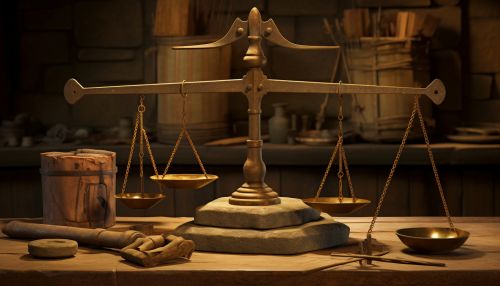Measurement
Introduction
Measurement is a fundamental concept in the field of scientific study, which involves the quantification of physical quantities. It is a process that uses numbers to represent a property of an object or event. The act of measuring results in a measurement, which is an observation that reduces an entity’s attributes to a value (scalar, vector, or tensor).
History of Measurement
The history of measurement is a fascinating study of how humans have come to quantify the world around them. Early civilizations, such as the Egyptians and Greeks, developed their own systems of measurement based on the human body, agricultural practices, and celestial bodies. These early systems were often inconsistent and varied greatly from region to region.


The need for a standardized system of measurement became apparent with the advent of trade and commerce. The French Revolution in the late 18th century led to the development of the metric system, a decimal-based system of measurement that is used worldwide today.
Units of Measurement
A unit of measurement is a definite magnitude of a quantity, defined and adopted by convention or by law, that is used as a standard for measurement of the same kind of quantity. Any other quantity of that kind can be expressed as a multiple of the unit of measurement.
There are seven base units in the International System of Units (SI), which is the modern form of the metric system. These are the meter for length, kilogram for mass, second for time, ampere for electric current, kelvin for temperature, mole for amount of substance, and candela for luminous intensity.
Measurement in Science
In the field of science, measurement is essential in making observations, performing experiments, and validating theoretical predictions. Scientists use a variety of tools and techniques to measure physical quantities such as length, mass, time, temperature, electric current, amount of substance, and luminous intensity.
Measurement in science also involves estimation and uncertainty. Every measurement has an inherent uncertainty, which is often expressed as a standard deviation or a confidence interval. Scientists use statistical methods to estimate this uncertainty and to analyze and interpret their data.
Measurement in Everyday Life
Measurement plays a crucial role in our everyday lives. From cooking recipes to construction projects, from weather forecasts to medical diagnoses, measurements are used in a wide variety of activities. They provide a common language that allows us to understand and describe the world around us.
Measurement Systems
There are two main systems of measurement in use today: the metric system and the imperial system. The metric system, also known as the International System of Units (SI), is a decimal-based system that is used worldwide. The imperial system, also known as the British Imperial system, is a system of weights and measures that is used primarily in the United States.
Conclusion
Measurement is a fundamental concept in science and everyday life. It provides a common language that allows us to understand and describe the world around us. With the advent of modern technology, the precision and accuracy of measurements have improved significantly, leading to advancements in science and technology.
